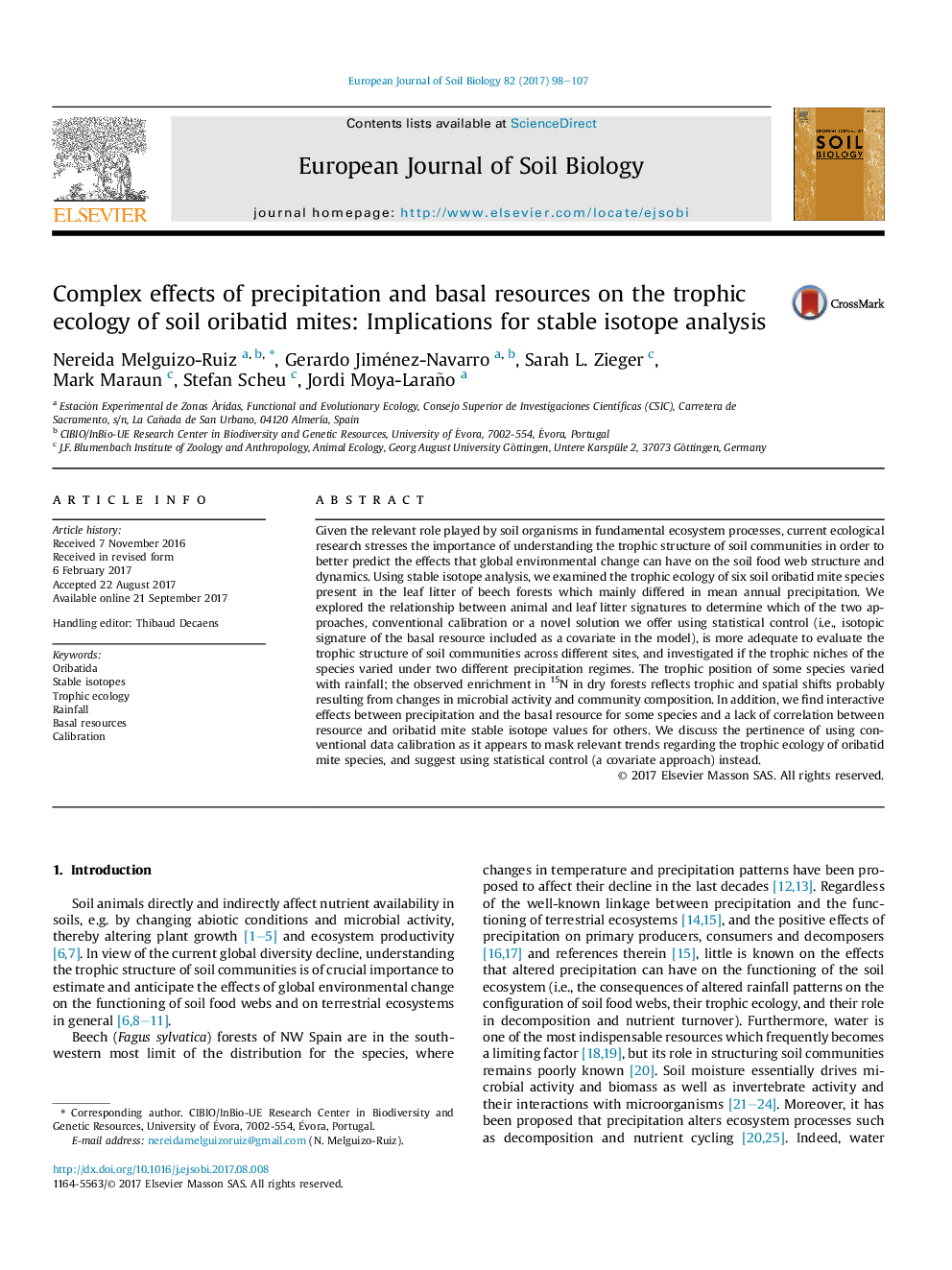| Article ID | Journal | Published Year | Pages | File Type |
|---|---|---|---|---|
| 5744206 | European Journal of Soil Biology | 2017 | 10 Pages |
â¢We show the results of a soil stable isotope study focusing on oribatid mites.â¢Rainfall can affect the trophic position of some oribatid species.â¢Changes and variability in 15N values, likely reflect across-site niche shifts.â¢When comparing consumer stable isotope values across habitats calibration is needed.â¢However, using resource isotopic signatures as covariates may be more appropriate.
Given the relevant role played by soil organisms in fundamental ecosystem processes, current ecological research stresses the importance of understanding the trophic structure of soil communities in order to better predict the effects that global environmental change can have on the soil food web structure and dynamics. Using stable isotope analysis, we examined the trophic ecology of six soil oribatid mite species present in the leaf litter of beech forests which mainly differed in mean annual precipitation. We explored the relationship between animal and leaf litter signatures to determine which of the two approaches, conventional calibration or a novel solution we offer using statistical control (i.e., isotopic signature of the basal resource included as a covariate in the model), is more adequate to evaluate the trophic structure of soil communities across different sites, and investigated if the trophic niches of the species varied under two different precipitation regimes. The trophic position of some species varied with rainfall; the observed enrichment in 15N in dry forests reflects trophic and spatial shifts probably resulting from changes in microbial activity and community composition. In addition, we find interactive effects between precipitation and the basal resource for some species and a lack of correlation between resource and oribatid mite stable isotope values for others. We discuss the pertinence of using conventional data calibration as it appears to mask relevant trends regarding the trophic ecology of oribatid mite species, and suggest using statistical control (a covariate approach) instead.
